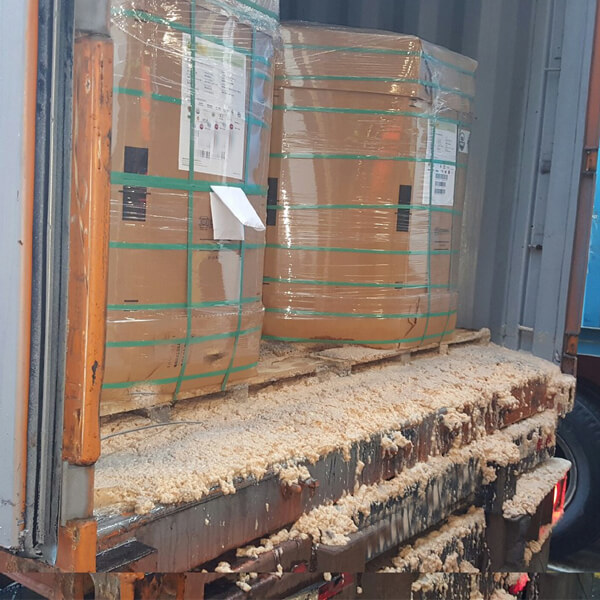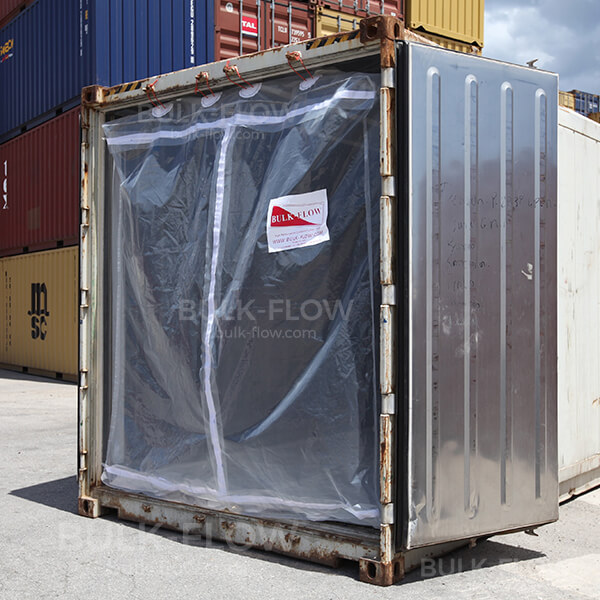There is a range of products within bulk solids that could taint insulated shipping containers from granulated products to powders:
- Seeds are granulated bulk solids;
- gypsum is a powder;
- raw salt could be a granulated bulk solid while refined salt is a powder;
- wheat powder;
- corn powder;
- coffee could be grain or powder;
- carbon black, PTA, glyphosate, katsuobushi (shaved dried Japanese fish), dried eggs, special monazite sands, and thousands of other materials.
It would be difficult to name them all, but they can be chemicals, human food, animal food, raw materials for future transformation, and many other uses.
Maritime containers can carry a great number of different materials from one port to another to reduce transportation costs. One insulated shipping container can be loaded with boxes at a port, unloaded at another port, loaded again with some sort of bulk solids, unloaded and loaded with something else, intermittently, repeating the operation reusing the same container.

What about contamination?
Some residue remains in maritime containers after a trip. This can contaminate the product carried on the next trip. However, cross-contamination can be avoided completely.
Container liner bags are better barrier liners that:
- prevent significant powder or granulated material leaks in a container carrying bulk solids;
- fully seal in products from contaminants, moisture, condensation, odors, and many other things that could simply ruin a full load of grains, powders or other kinds of bulk solids;
- seal the products from the weather itself or even from UV rays, heat, etc.

Tips to choose the best container liner to transport your bulks solids:
- BUY A LINER BASED ON VALUE, NOT PRICE.
- COMPARE THE STRUCTURE OF THE LINERS
- Simple comparisons will show differences in the level of insulation of the product from the environment or from the container itself.
- Select a liner without stitches to prevent moisture from entering the product. You may need it to be made out of a single plastic tube, welded to the bulkhead, and everything made from plastic film instead of woven materials.
- If the product requires thermal insulation, then choose a thermal liner. The better the quality, the best the results. Find the best in the market to save money.
- Simple comparisons will show differences in the level of insulation of the product from the environment or from the container itself.
- REQUEST FEEDBACK FROM THE FINAL USERS AND OTHERS
- Collect reviews from persons who install, uninstall, load and unload containers to find out about the leaking performance and other container liner parameters.
- Mix it up! Don’t rely 100% on the opinion of the same group of installers / uninstallers about changes that would affect procedures. It is only natural human behavior to try to keep everything the same for the sake of comfort.
- ASK THE CLEANING PERSONNEL
- This is a good way to understand if a particular liner contains products properly or not. If the cleaning personnel complains or has a lot of bad experiences with a liner, then this is a sign that it isn’t working properly to insulated shipping containers.
- LISTEN TO YOUR CUSTOMER!
- If your customer complains about the condition of the products, then this is a red flag about the whole process and the liner’s insulation capability, too.
- Ask if products arrive in the requested condition. The response will tell you where to improve your process.
- Is the container dirtier than it should be? Is it more difficult to clean it up?
Stick to measurable qualities. Establish good reasoning to define what each point that you describe will have a value that you will accept. The market price is a point between market demand and supply, so it could show changes and values that are not entirely related to the real value that could be delivered by some good or asset.
Establish an objective way to compare the value of the liners that are offered to you. The best value will surely be found in the one that will provide a better barrier between your merchandise and the environment.

